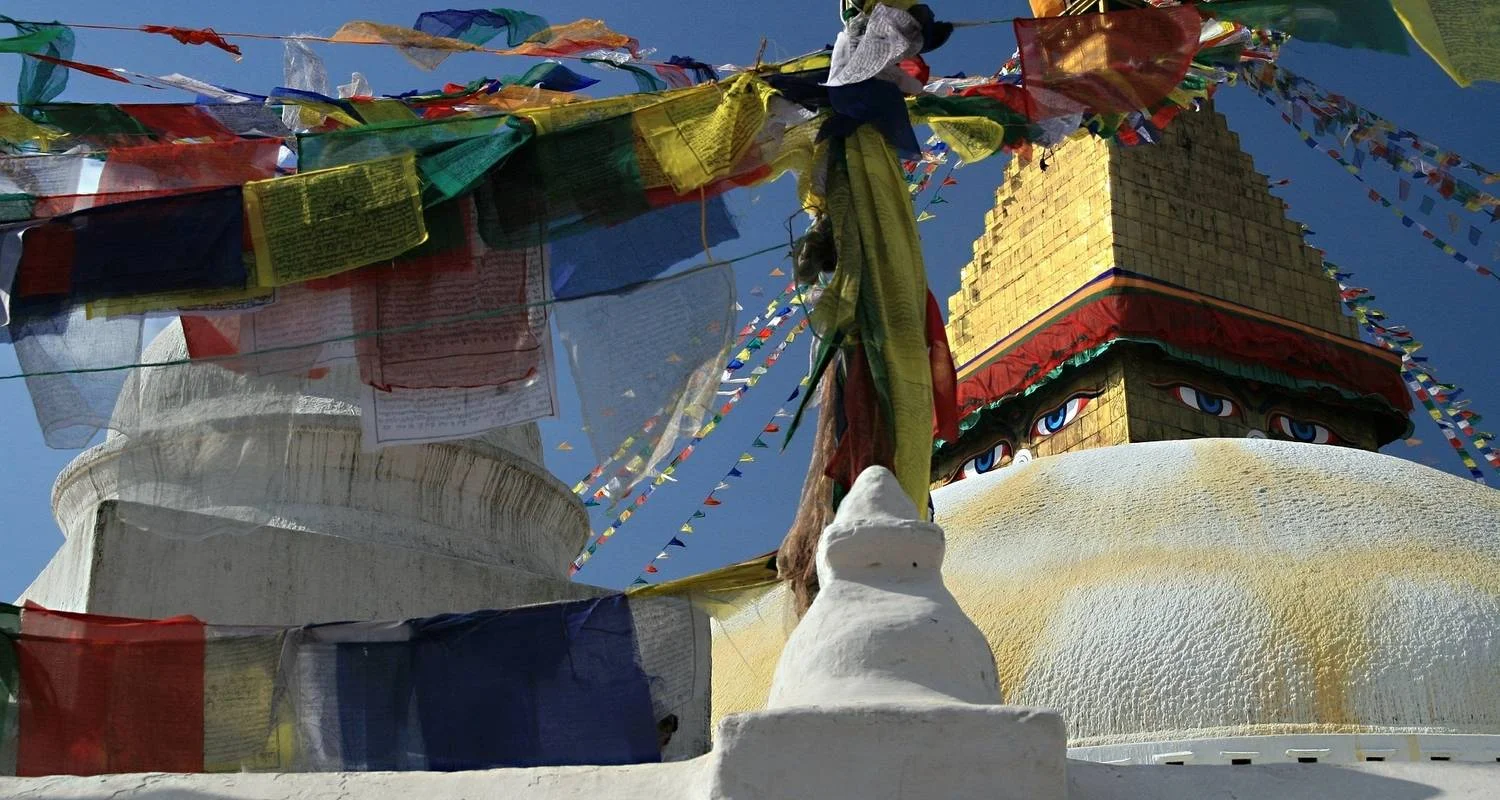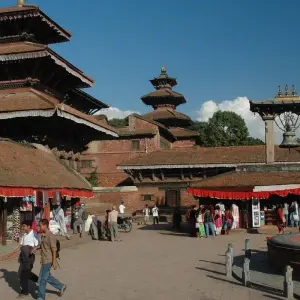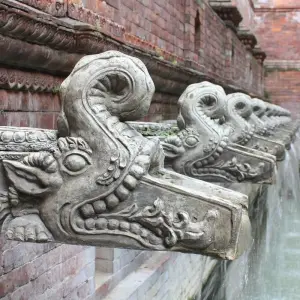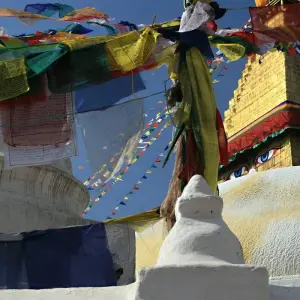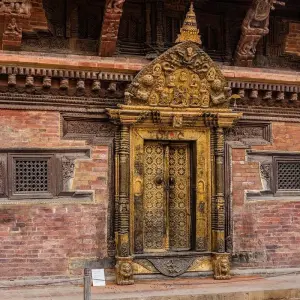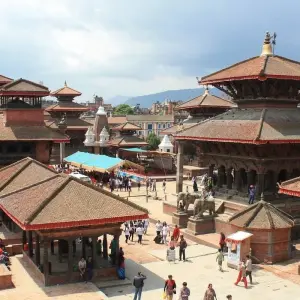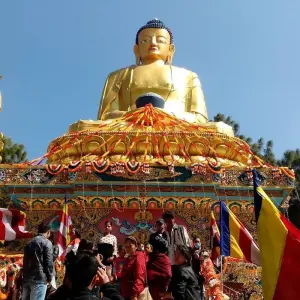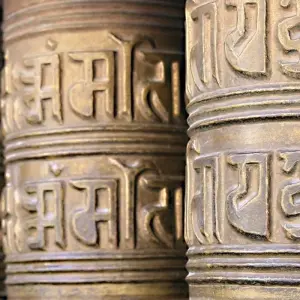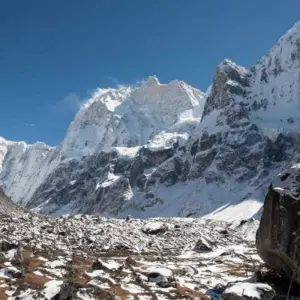Itinéraire
Deuxième plus haut sommet du Népal et troisième plus haut sommet du monde, le Kanchenjunga est situé dans l'angle nord-est du district de Taplejung. Ses crêtes principales forment une frontière naturelle entre deux États, ainsi qu'une ligne de partage des eaux pour plusieurs rivières importantes. La frontière tibétaine se trouve à 12 miles au nord du Kanchenjunga. Elle longe la principale ligne de partage des eaux de l'Himalaya, séparant le plateau aride du Tibet au nord et le pays plus fertile et arrosé par les pluies au sud.
Le Kanchenjunga est une montagne d'une grande beauté, suffisamment grande pour posséder ses propres glaciers qui rayonnent depuis ses différents sommets. Bien qu'entouré de nombreux sommets, les glaciers qui s'écoulent jusqu'à la lisière des forêts tropicales sont la propriété incontestée du Kanchenjunga. C'est la seule montagne qui montre sa gloire au monde entier. Seuls ceux qui peuvent s'offrir le temps et les dépenses nécessaires pour pénétrer dans les lointaines contrées d'où elles jaillissent peuvent admirer les gloires de l'Everest, mais le Kanchenjunga est facilement visible depuis n'importe quel habitant des contreforts inférieurs.
Le Kanchenjunga ne se contente pas de briser la force de la mousson, il protège dans une large mesure le principal bassin hydrographique au nord de ses assauts. Il en résulte une variation extraordinaire du paysage et du climat sur une petite surface. La colline sèche, presque poussiéreuse, à la tête de la vallée de Lhonak, la chaîne du Dodang Nyima et le plateau du Tibet au-delà forment un contraste frappant avec la vallée qui rayonne vers le sud depuis le Kanchenjunga, car il s'agit d'un pays sec, brun rougeâtre, avec un niveau de neige sensiblement plus élevé et des glaciers considérablement plus petits que ceux du Kanchenjunga et de ses voisins immédiats.Il n'y a probablement aucune autre montagne où l'alpiniste est exposé à de plus grands dangers que sur le Kanchenjunga, car il doit non seulement faire face aux avalanches de glace, mais aussi à des conditions météorologiques générales incertaines.
En gros, il y a quatre lignes d'approche principales du Kanchenjunga : la vallée de la rivière Tamor au Népal, passant par Ghunsa et Kangbachen, la vallée de Yalung au Népal, la vallée de la rivière Teesta au Sikkim, et la vallée de Talung également au Sikkim. Entre les vallées de Yalung et de Talung se trouve également la rivière Rangit, qui prend sa source dans les glaciers de Kabru, à 2400 pieds d'altitude, l'un des sommets les plus éloignés du Kanchenjunga au sud. La superficie du Kanchenjunga représente 55 % de la superficie du district de Taplejung et 1,40 % de la superficie totale du pays. Ses 65% de surface sont couverts par l'Himalaya, les roches montagneuses et la glace, et les 45% restants sont couverts de forêts, d'arbustes, de prairies et de terres agricoles. Le climat de cette région varie de la mousson subtropicale à basse altitude à l'alpin dans les zones les plus élevées.
Programme du circuit
Katmandou
Point de départ
Tribhuvan International Airport (KTM) त्रिभुवन विमानस्थल, त्रिभुवन विमानस्थल, Kathmandu, Bagmati, Nepal
Katmandou
Free day in kathmandu or sightseeing yourself. Kathmandu Valley includes several UNESCO World Heritage Sites, including Pashupatinath, Buddhist stupa in Boudhanath. We can also visit Swyambhunath, also known as Monkey Temple, built in 2000 years old. Finally, we can visit Patan, city of fine arts. In the afternoon, you will be meeting with your trekking guide and will check all the necessary things. Overnight stay in a hotel.
prendre un vol de Katmandou à Bhadrapur
De Teplejung à Khesewa
Today the trail first ascends to a ridge before dropping steeply through Shimu to a suspension bridge across the Phawa Khola, where there is a good swimming place. We then will climb to the Limbu village of Kunjari at 1700 meter and continue through wheat fields to a Gurung settlement on a 2240 meter high pass. From here we have our first views of Kanchenjunga. The trail enters the Kabeli Valley where we spend the next two days climbing up and down, in and out of ravines and over ridges. Today’s endpoint is in the village of Khesewa.
Trekking à Phumpe Danda
Our trek continues through the Kabeli Valley, passing a few spectacular waterfalls. After descending steeply through rice terraces into a side canon, we cross the Khaksewa Khola on a long suspension bridge at 1540m and then climb back to Mamanke. This is a prosperous Limbu village with bhattis (tea shops), and a large school.
Trekking à Yamphudin
This day will bring us a lot of jumping from stone to stone, as we first have to cross the Tenguwa Khola stream. We climb steeply up to a ridge marked by a chhorten and prayer flags. Going down from here to the Kabeli Khola will be another exercise of rock-hopping over boulders, treeroots, and intersecting stream channels as we head upstream. We then climb gently to Yamphudin, a mixed community of Sherpas, Limbus, Rais, and Gurungs. Overnight in tea house.
Trekking jusqu'à Lase Danda
Trekking à Tseram
From the stream the trail makes a steep climb through bamboo forests to Chitre at 2920 meter. After arriving here the ascent is less strenuous passing through a forest of pines and rhododendron to a pond at Lamite Bhanjyang (3410m). From this ridge we follow a steep set of switchbacks leading downhill through damp orchid-filled forests, crossing streams and isolated clearings used by herders. We stay above the wild river and follow it upstream to Torontan, where there are a few campsites close to the river or a little further ahead near a few caves. Continuing on, we reach to Tseram, where we stay the night.
Trekking à Ramche
A rocky loose path follows the stream and climbs up to some mani walls (stones carved with Buddhist prayers). Rathong (6678m) and Kabru Dome (6700m) loom at the head of the valley. Climbing further alongside the moraine of Yalung Glacier to where the valley opens up as we approach Yalung at 4260m. Our trek climbs further along the moraine to a lake and a big meadow at Ramche. The view is dominated by the spectacular peak of Rathong. Herds of blue sheep live on the cliffs above our campsite.
Trekking jusqu'à Lamite Bhanjyang
We follow our way back along the Simbua Khola to a campsite at Lamite Bhanjyang. There is a pond nearby at 3410m, which is a nice place to set up camp, although sometimes there may be a water shortage there. Overnight here.
Trekking à Yamphudin
The first part of the trail goes along the bank of the Simbua Khola. You have to walk through a dense jungle. On the way, you can see the effects of a landslide. The trails normally ascend up to Lamite Bhanjyang and then descend to Yamphudin, crossing a small river. Yamphudin is a mixed community of Sherpas, Limbus, Rais, and Gurungs. Among the corn and rice fields of the village, there is a school and some shops with minimal supplies. Overnight in Yamphudin.
Route de Yamphudin à Ilam Bazaar
After breakfast, we take a jeep ride from yamphudin to Ilam Bazaar. You will find the sceneries here to be spectacular and the people to be kind and hospitable. Overnight in a guesthouse.
Ilam à Bhadrapur puis vol pour Katmandou
Katmandou
Point d’arrivée
Tribhuvan International Airport (KTM) त्रिभुवन विमानस्थल, त्रिभुवन विमानस्थल, Kathmandu, Bagmati, Nepal
Politique d'annulation
when tour is book then payment is refundable subject to administrative cost at 10% of the tour cost.
· Between 30 to 60 day in advance, is subject to deduction of 20% from the tour cost.
· Between 20 day and 30 day in advance is subject to 30% deduction on the tour cost.
· 15 days to 20 day in advance is subject to deduction of 50% on the tour cost.
· In less than 15 days shall be liable to no refund of the tour cost, full amount shall be forfeited.
Détails du circuit
Hébergement
- Trois nuits d'hébergement dans un hôtel de catégorie 3 étoiles à Katmandou
- 10 nuits et 11 jours dans des lodges pendant le Trekking
Transport
- Arrivée et départ en véhicule privé
- Bhadrapur à Taplejung en jeep locale
- Yamphudin à Ilam en jeep locale et Ilam à Bhadrapur
Assurance
Facultatif
- Nuit supplémentaire à Katmandou : 50 USD pour une chambre double et 45 USD pour une chambre simple avec petit-déjeuner.
- Si vous souhaitez faire du tourisme à Katmandou, dans les nombreux sites de la ville classés au patrimoine mondial de l'UNESCO, il vous en coûtera 50 USD par voiture.
Vols
- Katmandou à Bhadrapur et Bhadrapur à Katmandou par vol
Services supplémentaires
- Frais du système de gestion de l'information des trekkeurs (TIMS)
- Permis du parc national du Kanchenjunga et permis de la zone réglementée du Kanchenjunga (3 photos sont nécessaires pour les permis)
- Equipement et vêtements pour les porteurs et le personnel
- Equipement (sac de couchage, trousse de premiers secours, oxymètre, carte, etc.)
- Assurance pour tout le personnel et les porteurs.
- Réunion à Katmandou avant le trekking
- Certificat de réussite du trekking fourni
- Un T-shirt Adventure Himalayan gratuit
Services supplémentaires
- Visa pour le Népal - Entrée multiple 30 jours - 50 USD (détails sur la page des visas)
- Vol international
- Visites touristiques à Katmandou
- Assurance pour les clients (évacuation par hélicoptère, etc.)
- Déjeuner et dîner à l'hôtel à Katmandou
- Boissons alcoolisées, bonbons, etc.
- Equipement et vêtements personnels (disponibles à la location)
- Pourboires pour le guide et le porteur
- Toutes les dépenses encourues en cas d'évacuation d'urgence ou de blocage de la route pour quelque raison que ce soit, les boissons de table, les collations pendant la marche.
Repas
- Petit déjeuner inclus à l'hôtel de Katmandou
- Petit déjeuner, déjeuner et dîner inclus pendant le trekking
- Dîner d'adieu à Katmandou avec danse culturelle népalaise
Guide
- Guide de trekking expérimenté et serviable (formé par le ministère du tourisme)
- Porteur portant au maximum 20 kg et un porteur pour deux personnes.
Bon à savoir
Devise
Nepalese Rupee
Népal

